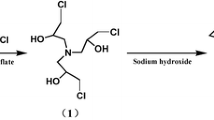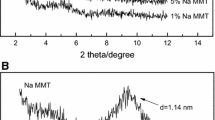Abstract
The objective of this research was to study the adhesion properties of sodium bisulfite (NaHSO3)-modified canola protein. Protein was extracted from canola meal through alkali solubilization and acid precipitation methods, then modified with different concentrations of NaHSO3 (0–15 g/L) during the isolation process. As NaHSO3 concentration increased, canola protein purities decreased. Amino acid profiles showed that the hydrophobic amino acids in canola protein constituted only 27% of total protein, indicating that canola protein is mostly hydrophilic. The reducing effects of NaHSO3 were exerted on canola protein through the breaking of disulfide bonds in both its cruciferin and napin components, as reflected by the protein electrophoresis profile, DSC data, and morphological images. The wet protein isolates were used as adhesives. The greatest wet shear strength of canola protein adhesive without modification was 3.97 MPa with 100% wood cohesive failure (WCF), observed at a curing temperature of 190 °C. NaHSO3 had slight weakening effects on the adhesion performance of canola protein. Canola protein modified with 3 g/L NaHSO3 exhibited wet shear strength similar to the control at 190 °C and higher strength at 150 and 170 °C. The NaHSO3 modification significantly improved handling and flowability of canola protein adhesives.





Similar content being viewed by others

References
Wool R, Sun XS (2005) Soy protein adhesives. In: Bio-based Polymers and Composites. Elsevier Academic Press, Burlington, pp 327–368
USDA (accessed May 2011) Oilseeds: world markets and trade. http://www.fas.usda.gov/oilseeds/circular/2011/March/oilseeds.pdf
Hoglund AS, Rodin J, Larsson E, Rask L (1992) Distribution of napin and cruciferin in developing rape seed embryos. Plant Physiol 98(2):509–515
Sung-Ae J, Geum-OK L, Kyung BS (2010) Preparation and mechanical properties of edible rapeseed protein films. J Food Sci 76(2):C218–C223
Manamperi WAR, Chang SKC, Chad AU, Pryor SW (2010) Plastics from an improved canola protein isolate: preparation and properties. J Am Oil Chem Soc 87:909–915
Narayanamurti D, Ranganathan V, Roy DC (1943) Rapeseed protein-formaldehyde dispersions as plywood adhesives. Forest Research Institute Dehra Dun. Indian forest leaflet No. 58
Qi G, Sun XS (2011) Soy protein adhesive blends with synthetic latex on wood veneer. J Am Oil Chem Soc 88:271–281
Zhang L, Sun XS (2010) Sodium bisulfite-induced changes in the physicochemical, surface and adhesive properties of soy β-conglycinin. J Am Oil Chem Soc 87:583–590
AOAC International (1995) Crude protein combustion method. Method 990.03. Official methods of analysis of AOAC international, 15th edn. AOAC International, Gaithersburg
AOAC International (1995) Fat (crude) or ether extracts in food and animal feed-Soxhlet method. Method 920.39C. Official methods of analysis of AOAC international, 15th edn. AOAC International, Gaithersburg
AOCS (1996) Approved method Ba 6a–05: crude fiber analysis in feeds by filter bag technique. Official method and recommended practices, 4th edn. American Oil Chemists’ Society, Champaign
Laemmli UK (1970) Cleavage of structural proteins during the assembly of the head of bacteriophage T4. Nature 227:680–685
Li N, Wang Y, Tilley M, Bean S, Wu X, Sun XS, Wang D (2011) Adhesive performance of sorghum protein extracted from sorghum DDGS and flour. J Polym Environ. doi:10.1007/s10924-011-0305-5
Mo X, Sun XS, Wang D (2004) Thermal properties and adhesion strength of modified soybean storage proteins. J Am Oil Chem Soc 81:395–400
ASTM D2339-98; ASTM D1183-96; ASTM D1151-00 (2002) Annual book of ASTM standards, American Society for Testing and Materials, West Conshohocken, pp 158–160, pp 70–73, pp 67–69
Frank WS, Kazimierz JD (1984) Determination of glucosinolates in canola meal and protein products by desulfation and capillary gas-liquid chromatography. J Agric Food Chem 32(5):1172–1175
Krishnamoorthy U, Muscato TV, Sniffen CJ, Van SPJ (1982) Nitrogen fractions in selected feed stuffs. J Dairy Sci 65:217–225
Slominski BA, Simbaya J, Campbell LD, Rakow G, Guenter W (1999) Nutritive value for broilers of meals derived from newly developed varieties of yellow seeded canola. Animal Feed Sci Technol 78(3):249–262
Shahidi F, Naczk M, Hall D, Synowiecki J (1992) Insensitivity of the amino acids of canola and rapeseed to methanol-ammonia extraction and commercial processing. Food Chem 44(4):283–285
Manamperi WA, Pryor SW, Chang SKC (2007) Separation and evaluation of canola meal and protein for industrial bioproducts. ASABE/CSBE 2007 North Central Intersectional Conference, Fargo. (Paper number: RRV-07116)
Cheng E (2004) Adhesion mechanism of soybean protein adhesives with cellulosic materials. Ph.D. dissertation. Kansas State University, Department of Grain Science and Industry
Sun XS, Wang D, Zhang L, Mo X, Zhu L, Bolye D (2008) Morphology and phase separation of hydrophobic clusters of soy globular protein polymers. Macromol Biosci 8:295–303
Wu J, Muir AD (2008) Comparative structural, emulsifying, and biological properties of 2 major canola proteins, cruciferin and napin. J Food Sci 73:210–216
Uruakpa FO, Arntfield SD (2006) Impact of urea on the microstructure of commercial canola protein-carrageenan network: a research note. Int J Biol Macromol 38:115–1119
Zhong Z, Sun SX, Wang D (2007) Isoelectric pH of polyamide-epichlorohydrin modified soy protein improved water resistance and adhesion properties. J Appl Polym Sci 103:2261–2270
Schwenke KD (1994) Rapeseed protein. In: Hudson JF (ed) New and developing sources of food proteins. Chapman and Hall, London, pp 281–306
Acknowledgments
This is contribution no. 12-014-J from the Kansas Agricultural Experimental Station, Manhattan, KS, 66506, USA.
Author information
Authors and Affiliations
Corresponding author
About this article
Cite this article
Li, N., Qi, G., Sun, X.S. et al. Physicochemical Properties and Adhesion Performance of Canola Protein Modified with Sodium Bisulfite. J Am Oil Chem Soc 89, 897–908 (2012). https://doi.org/10.1007/s11746-011-1977-7
Received:
Revised:
Accepted:
Published:
Issue Date:
DOI: https://doi.org/10.1007/s11746-011-1977-7



